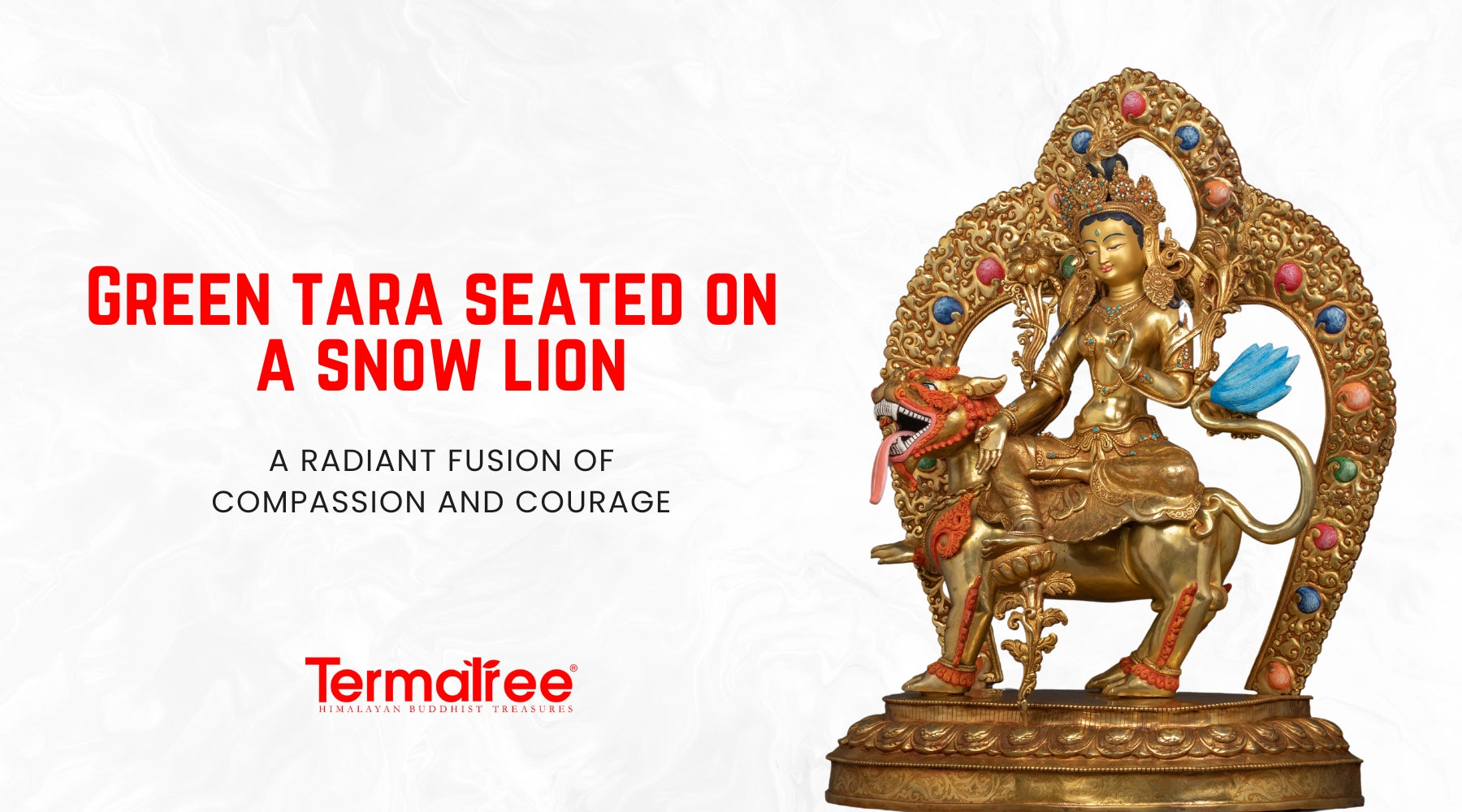Who Is Vajrapani?
Vajrapani is the manifestation of the self-born Buddha Aksobhya. Vajrapani means the “Thunderbolt-Bearer” in Sanskrit. He is believed to be the protector of the Nagas. Nagas are the mythological half-man, half-serpent creatures whose traditional enemy is the hawk-like Garuda. So, in order to deceive Garuda, Vajrapani sometimes assumes the shape of a bird too. He is invoked in times of drought because of his association with the rain-controlling Nagas and with the Hindu god of rain, Indra.
He holds the thunderbolt in his right hand, the way Indra does, and is colored dark blue or white. It is a subtle nod to his power to cut through the darkness of delusion, and also the energy of an enlightened mind. He assumes various ferocious forms to combat demons in Tibet, as well as to guard the mystical teaching of Buddhism. And in Japan, he is mostly found guarding the temple doorways.
The Three Family Protectors: The Triad of Bodhisattvas
His statues often times come in groups of three with the Buddha Amitayus (or the bodhisattva of wisdom, Manjusri) and the lotus-bearing bodhisattva of compassion, Padmapani. Along with Avalokiteshvara and Manjushri, Vajrapani is also a member of the trinity of Bodhisattvas known as the Three Family Protectors. Vajrapani is the protector of the Buddha family of Vajra (thunderbolt) family. The family includes Akshobya (the lord of the Vajra family) and Yamantaka.
Vajrapani’s Mantra
“Om Vajrapani Hum”
Vajrapani’s mantra is deceivingly simple and it merely means his name. Basically, it is the utterance of “wielder of the thunderbolt,” which is framed between the mystical syllables Om and Hum. Simple as it may seem, this mantra is so powerful that it actually helps us to gain access to the irrepressible energy that Vajrapani symbolizes. A certain affinity with Vajrapani does, of course, help here. Though, the sound of the mantra is itself rather energetic.
Vajrapani’s Story of Origin
Popular as Yaksha, or nature spirit, Vajrapani has his origins in the Pali canon. There is a story in a Buddhist scripture, the Digha Nikaya. A Brahmin, or a priestly youth named Ambattha behaves very impolitely towards the Buddha and disrespects the him. The Brahmin believes him to belong to a lower social caste. He then proceeds to refuse to answer a question the Buddha the Buddha has put in front of him about his ancestry. The Buddha, despite the rudeness of the Brahmin, is exceedingly polite.
Ambattha’s audacity is such that he refuses to answer the question twice. The Buddha reminds him about the traditional belief that if you refuse to answer the question of an enlightened one three times, your head will split in seven pieces. This, of course, never happens. However, just then “Vajirapani,” which is the Pali form of his name, appears. And he is ready to make good on the ancient prophecy. This terrifies Ambattha, who then promptly answers the Buddha’s question.

Vajrapani, as mentioned before, also has his mythic roots in Indra. Indra is the Hindu God of Thunder. He’s thus connected to Zeus and Jupiter. Along with Indra, they are all variants of the same thunderbolt-wielding sky-deity. To cite an example; “Dyaus” is Sanskrit for “sky.” And Indra is also known as “Indra Dyaus,” whereas “Zeus” is the Greek form of Dyaus. And so, Jupiter is “Dyaus-piter” or “sky father.”
Vajrapani’s Unsettling, Wrathful Iconography
Vajrapani is usually depicted as being dark blue in color. It is generally assumed that he borrows this color from Aksobhya, who is the head of the Vajra Family. However, this is also the color of a thunder cloud which, in the bigger picture, symbolizes his thunder-like rage along with his origins as a God of Thunder. Being depicted as wrathful does not solely mean he rages and has no other quality. But he actually represents the power, energy, and fearlessness of the Buddhas, and stands for so much more than he is credited for.
Speaking of standing, he stands in, or is rather caught in the warrior pose that which is undoubtedly quite familiar to those who practice Hatha Yoga. The depiction of Vajrapani usually has him dancing wildly inside a halo of flames. This supposedly represents transformative power of awakening. He wields a vajra in his outstretched right hand, and holds a lasso with which to bind demons in his left. Vajrapani has a loin-cloth draped around his hips, where the cloth is made from the skin of a tiger. He is adorned with the five-pointed Bodhisattva crown.
However, the crown bears five skulls, befitting his other features and general aura. A peculiar necklace hangs to his belly, whilst he also has a snake slithered around his neck. Snakes and dragons are often associated with clouds and rain. They fit in with Vajrapani’s origins as a God of Thunder. A disturbing third eye bulges from the center of Vajrapani’s forehead. As for his hair, it is flowy and goes slightly upwards, just as Ambattha’s hairs stood on end when he encountered Vajrapani. Vajrapani does appear to be wrathful, but since he is also an embodiment of an enlightened mind, he is free from hatred.




